Thunnus obesus
North Coast (Oregon Border to Point Arena)
North Central Coast (South of Point Arena to Half Moon Bay)
Central Coast (South of Half Moon Bay to Point Conception)
Santa Barbara (Point Conception to Point Dume)
South Coast (Point Dume to Mexico border)
Firm fish
Flakey fish
Oily fish
Wild caught
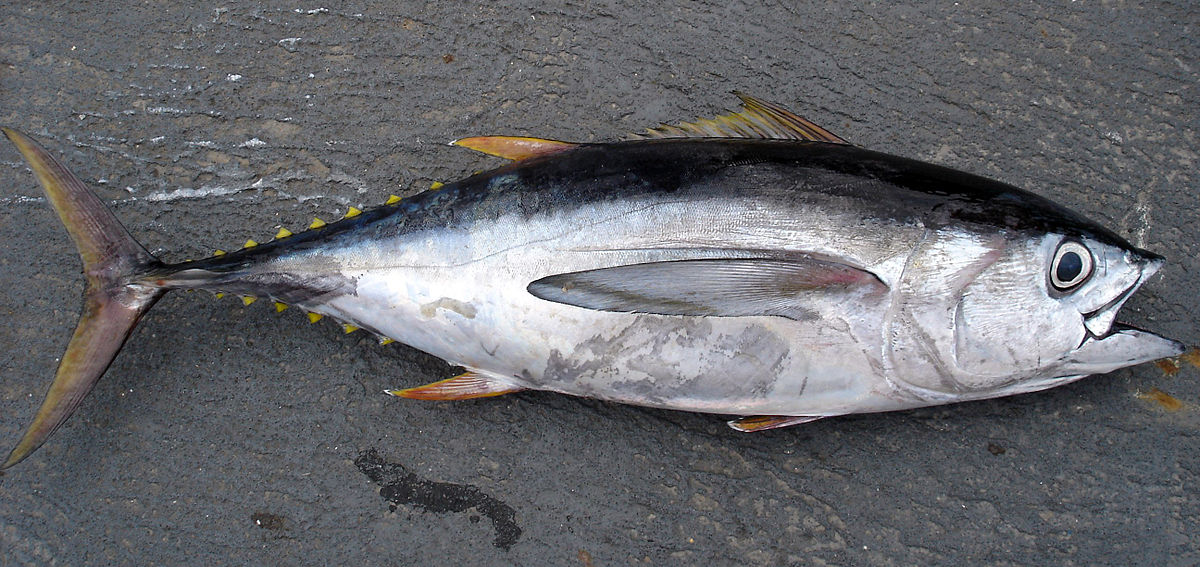
The Science
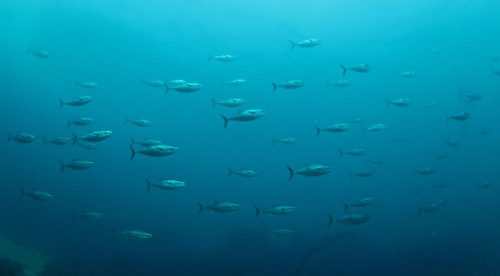
Taxonomic description
- Has a large, robust body that is slightly compressed from side to side. [1]
- Back is metallic dark blue, lower sides and belly is whitish, yellow fins and lateral iridescent blue band runs along sides of live individuals. [1]
- Distinguished from yellowfin tuna by its bigger eyes and black-edged finlets. [1]
- Usually weighs 20-200 lbs. [2]
Distribution
- Found in tropical and temperate waters of the Atlantic, Indian, and Pacific Oceans. [2]
Life history
- Lives seven to nine years and matures between three and four years. [2]
- Spawns year-round in tropical waters, seasonally in temperate waters. [2]
- Releases 3-6 million eggs during spawning! [2]
- Eggs have oily coatings in order to float until hatched, about 24 hours after fertilization. [2]
Habitat
- Migratory, and will school with other tuna species at ocean surface. [2]
- Moves to deeper waters at night, has eyes adapted to low light levels and can regulate body temperature. [2]
- Feeds on fishes, cephalopods, and crustaceans. [1]
- Preyed on by larger tuna, billfish, toothed whales, and sharks. [2]
The Fishery
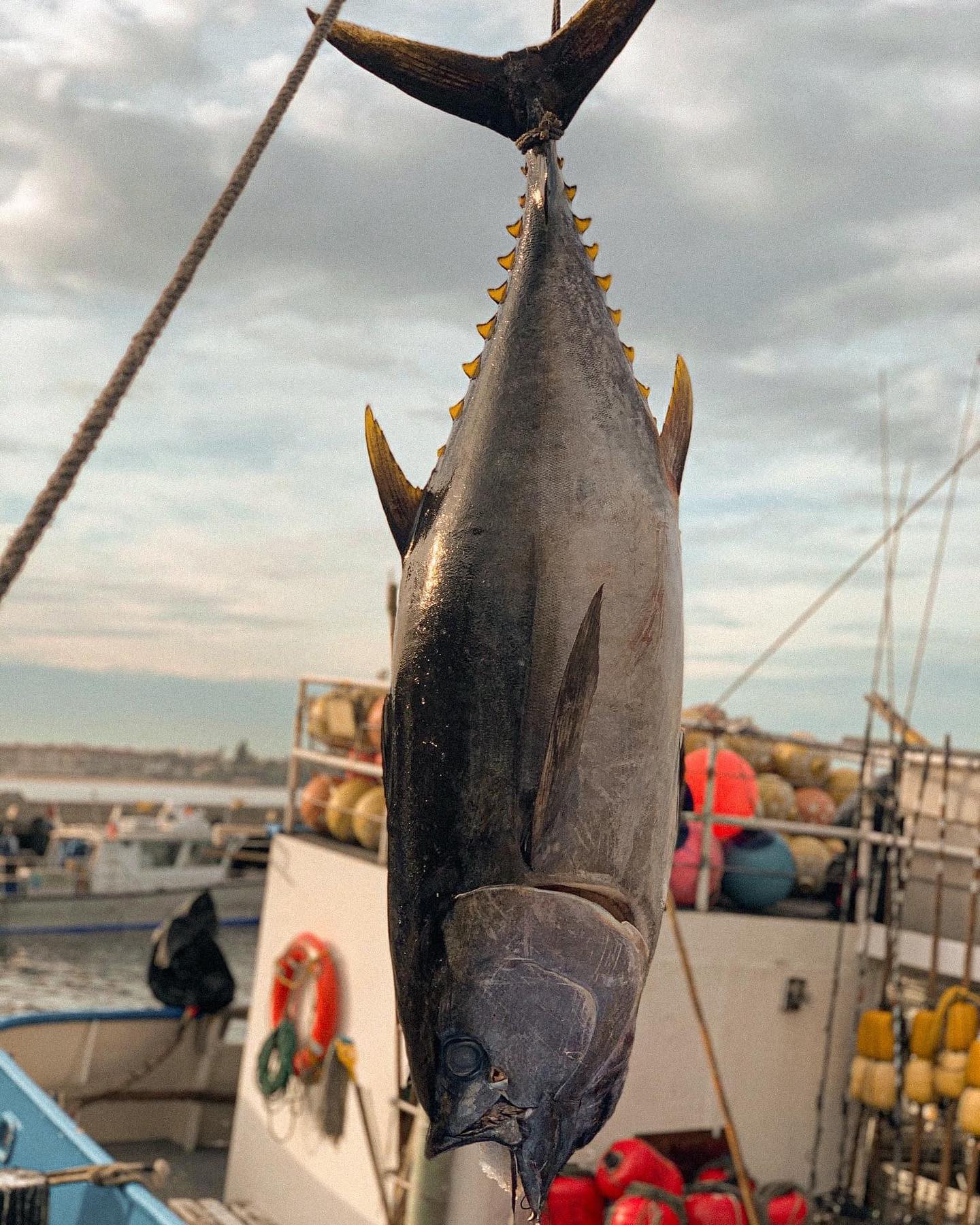
Seasonal availability
- Available year-round. [3]
Regulatory and management authority
- Internationally overseen by the Inter-American Tropical Tuna Commission (IATTC) and the Western and Central Pacific Fisheries Commission (WCPFC). [3]
- Along the Pacific West Coast, the fishery is overseen by NOAA fisheries and, as established by the Magnuson-Stevens Act, the Pacific Fishery Management Council through the West Coast Highly Migratory Species Fisheries Management Plan. [3,4]
- As established by the Marine Life Management Act, the California Department of Fish and Wildlife (CDFW) collects data on this fishery through the Pelagic Fisheries and Ecosystem Program. [5,6]
Gear type
- Caught by purse seine, longline and handlines, and hook-and-line. [3]
Status of the fishery
- Stock is considered vulnerable by IUCN, but is monitored closely by governing authorities. [3]
Potential ecosystem impacts
- Fishing gear rarely contacts seafloor, so there are minimal habitat impacts. [3]
- To minimize the impact of bycatch, management measures, training programs, and observer programs are required for American fishermen. [3]
The Seafood
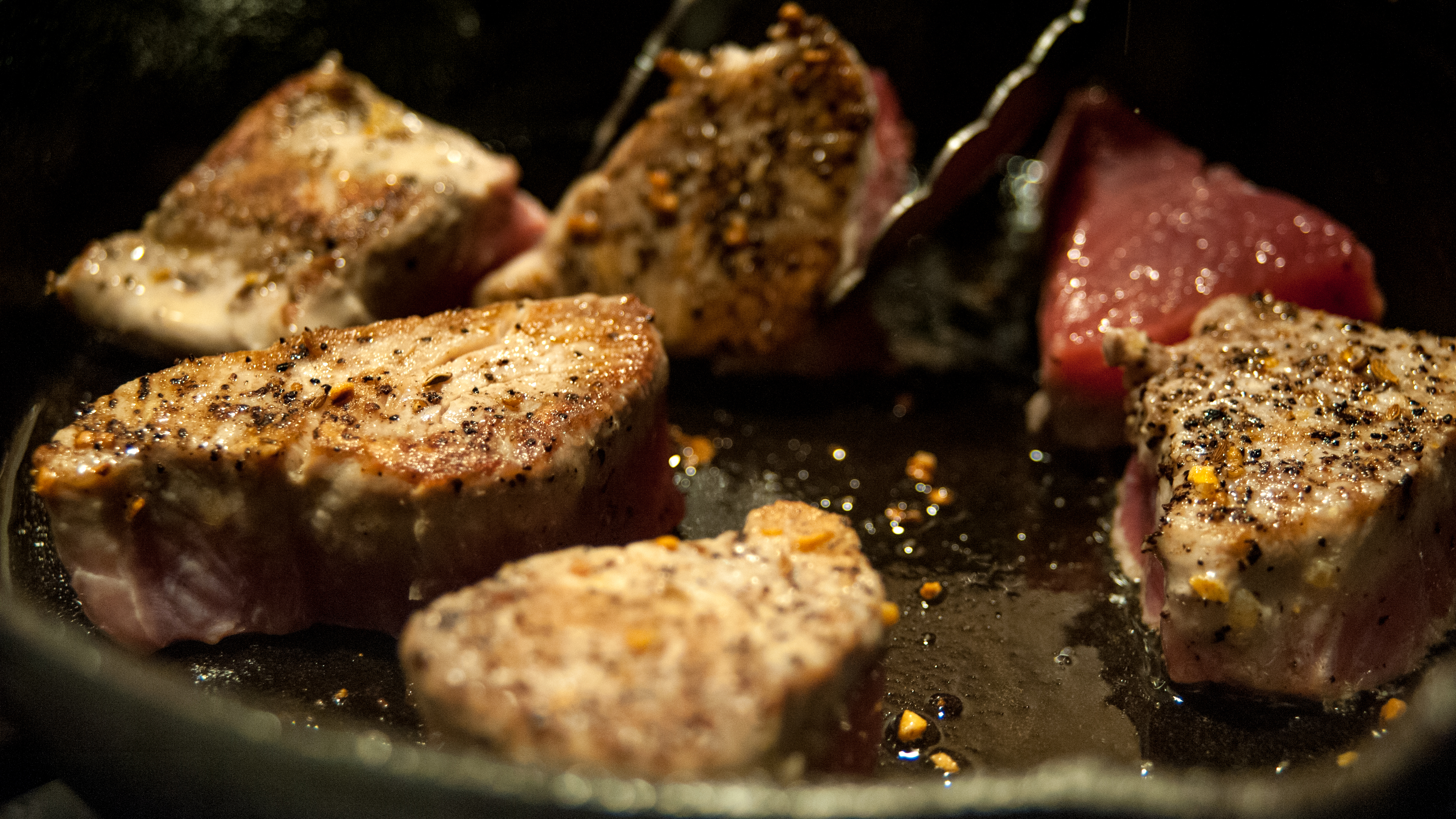
Edible portions
- Typically only the meat is consumed, but the rest of the fish can also be utilized. [2]
Description of meat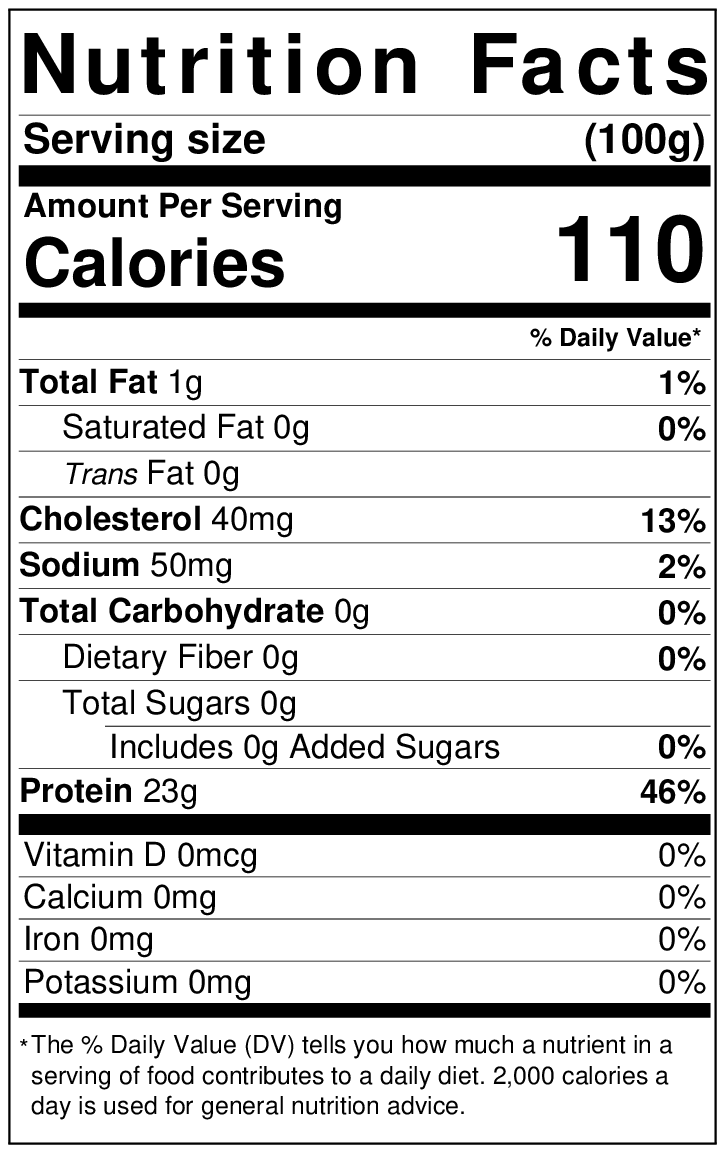
- Firm and moist with a mild, meaty flavor and reddish-pink color that has large flakes when cooked. [2]
Culinary uses
- Enjoy it raw, baked, broiled, grilled, sautéed, or smoked! [2]
- For a tuna nigiri recipe, visit Izzy Cooking. [7]
- For a Spanish tuna meatball recipe, visit Luxe Gourmets. [8]
Nutritional information
- Information for 100g of bigeye tuna shown on table at the right. [3]
- Bigeye tuna is a good source of Omega-3! [3]
Toxicity report
- As bigeye tuna may have mercury, recommended servings depend on age and gender. [3]
Seasonal availability
- Available year-round. [3]
References
[1] Luna, S. Fishbase. n.d. Thunnus obesus. Web. https://www.fishbase.se/summary/Thunnus-obesus.html. Accessed 4 February 2021.
[2] FishChoice. 2020. Bigeye Tuna. Web. https://fishchoice.com/buying-guide/bigeye-tuna. Accessed 4 February 2021.
[3] Fishwatch. 2020. Pacific Bigeye Tuna. Web. https://www.fishwatch.gov/profiles/pacific-bigeye-tuna. Accessed 4 February 2021.
[4] Fishery Management Plan for U.S. West Coast Fisheries for Highly Migratory Species. 2018. Pacific Fishery Management Council. Web. https://www.pcouncil.org/documents/2018/04/fishery-management-plan-for-w.... Accessed 24 August 2020.
[5] Marine Life Management Act. n.d. California Department of Fish and Wildlife. Web. https://wildlife.ca.gov/Conservation/Marine/MLMA. Accessed 24 August 2020.
[6] Overview of the Pelagic Fisheries and Ecosystems Program. n.d. California Department of Fish and Wildlife. Web. https://wildlife.ca.gov/Conservation/Marine/Pelagic#52132542-overview. Accessed 9 December 2020.
[7] izzy cooking. 2020. Tuna Nigiri (How to make tuna sushi). Web. https://izzycooking.com/tuna-nigiri/. Accessed 4 February 2021.
[8] Matsumoto, M. Luxe Gourmets. 2015. Bigeye Tuna Albondigas. Web. https://www.luxegourmets.com/luxe-recipes/bigeye-tuna-albondigas-recipe. Accessed 4 February 2021.
[9] Hawaii Seafood. 2015. Bigeye Tuna (Ahi). Web. https://www.hawaii-seafood.org/wild-hawaii-fish/bigeye-tuna/. Accessed 5 February 2021.
[10] Shimada, A. NOAA fisheries. 2006. Thunnus_obesus Longline fishing research on the NOAA Ship OSCAR ELTON SETTE. Bigeye tuna. Digital image. Web. https://en.wikipedia.org/wiki/Bigeye_tuna#/media/File:Thunnus_obesus_(bigeye_tuna).jpg. Accessed 5 February 2021.
[11] bexlloyd. iNaturalist. 2017. Digital image. Web. https://www.inaturalist.org/photos/6554896. Accessed 12 February 2021.
[12] Tuna Harbor Dockside Market. Facebook. 2021. Digital image. Web. https://www.facebook.com/thdocksidemarket/photos/4210082502354334. Accessed 5 February 2021.
[13] McCullum, J. flickr. 2016. Tuna the way they like it. Digital image. Web. https://www.flickr.com/photos/sugarcreekphoto/24383222851/. Accessed 12 February 2021.
